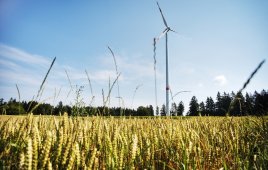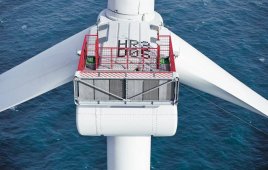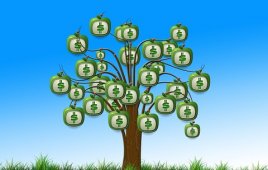Editor’s note: This article comes from the Project Finance NewsWire, a publication sponsored by Chadbourne Parke LLC and edited by Keith Martin.
Three tax equity investors and the lawyer who handles energy issues on the elite tax policy staff at the US Department of the Treasury talked at the annual ACORE/Euromoney Wall Street Renewable Energy Finance Forum in New York in late June about new trends and current issues in the tax equity market. The following is an edited transcript.
The panelists are Adam Altenhofen, vice president for renewable energy at US Bank, John Eber, managing director and head of energy investments at J.P.Morgan, Hannah Hawkins, attorney-advisor in the office of tax policy at the US Department of the Treasury, and Jonathan Stark, managing director for origination at GE Energy Financial Services. The moderator is Keith Martin with Chadbourne in Washington.
- MARTIN. John Eber, it seems like everybody took his or her foot off the accelerator after Congress extended tax credits in December. The tax equity market was pretty slow in the first part of the year. Do you see it getting back to a normal pace? Is it there now? What do you see for the rest of the year?
- EBER: We see the market looking a lot like it was last year, which was one of the largest years ever for tax equity. There was $13 billion raised last year, and this year is off to the same pace as last year. I am not in the business of predicting, but I think the market will be similar, if not a little bit larger than last year.
- MARTIN: Adam Altenhofen, US Bank is a big part of the market. Do you agree?
- ALTENHOFEN: Yes. I share the view that it got off to a little slower start. A lot of people, including US Bank, were expecting there to be a major drop off at the end of 2016 as tax credits expired, so we did a lot of investing last year for 2016 projects. We had to do a little recalibration at the start of 2016 after Congress extended the tax credits. We have been focusing lately on bringing additional investors into the market to try to help grow that $13 billion number.
- MARTIN: You did $2 billion of the $13 billion last year. What do you expect this year?
- ALTENHOFEN: We will probably commit about $1.6 billion this year. We closed a bit more last year in anticipation of a cliff.
- MARTIN: Jon Stark, are we back to normal now? It is late June.
- STARK: I think it is normal for there to be a slowdown after an extension, in particular a four-year extension. While the beginning of the year has been slow on new PPAs, we hear from developers that they are being shortlisted, and new PPAs are imminent. We expect more wind transactions to hit the market later in the year as new PPAs are executed.
We are seeing a lot of solar right now. A number of solar projects that developers were hoping to close by year end were delayed and are in the market now.
- EBER: That was probably the biggest development last year. Solar surpassed wind for the first time in deal volume. A big chunk of that was in the residential sector and right behind it was utility-scale solar. As long as those two sectors remain popular, there will be continued growth in the demand for tax equity.
- MARTIN: What was the breakdown last year between solar and wind?
Read the rest: http://www.chadbourne.com/tax-equity-trends-project-finance-august-2016
Filed Under: Financing





